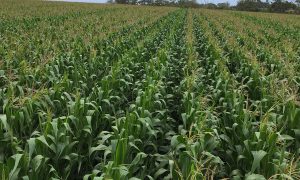The deregulation of the beef Industry around 1994 coincided with the termination of the old “Carcass Grading System” based on criteria of age, conformation and fatness of the carcass.
The same criteria remained to facilitate a Beef Classification System moving to the idea of “description only”, as opposed to ranking by grading, and leaving the choice to the buyer and ultimately the consumer to select according to their needs. In a regulated market (pre 1994) most trading of carcasses was done in urban centres and visual auctioning of carcasses dominated trading.
Movement of carcasses from outside into regulated areas were prohibited. After deregulation, carcasses could be produced and sold across the country, which meant that visual auctions had to be replaced by electronic auctions requiring a description of the carcass for a remote buyer, hence the development of a Classification System.
Deficiencies of the current classification system
Although the classification system was never intended for the purpose of describing expected eating quality, terms such as “Most Tender”, “Tender”, “Less Tender” and “Least Tender” were given to the 4 age classes (A, AB, B and C), respectively and were solely based on the finding that muscles of younger animals had significantly higher muscle collagen solubility and should therefore be more tender.
At least for high connective tissue cuts, age-related differences in eating quality would have described eating quality fairly accurately in the early years of Classification. Under a regulated industry, production systems and abattoir (processing) practices were fairly uniform so that other factors (apart from age) influencing eating quality would not have played a major role.
However, since deregulation, production and processing diversified and factors such as genetics, nutrition, use of growth promotants, pre-slaughter handling (stress), variable processing (slaughter, chilling) and post slaughter practices (aging, packaging, cooking) were shown to be more important than animal age in the role they played in eating quality.
Due to these factors, today, the variation in eating quality of young A-age animals (mostly grain-fed) for example is very high and it cannot be assumed that A-age (12-20+ months) beef has better eating quality than older AB (~24 -30months+) and B age (30-45 months) beef. Furthermore, the consumer has no criteria to verify the expected eating quality of generic beef on the shelf, while branded beef programs fall short of sufficient criteria to provide guarantees for good eating quality.
Despite the fact that the classification system does not rank carcasses according to consumer preferences, price formation over the years has always shown preference for grain-fed (predominantly A-class) beef.
As a result, commercial, emerging and communal farmers opting for an ox production system based on older cattle, as against a weaner system (for the feedlots), are consistently experiencing price discrimination except when providing cattle under strict criteria to branded programs such as Free Range beef.
Options to overcome these deficiencies
There are various grading and classifications systems used across the world and most of them have common criteria to either describe the composition/yield of the product or the eating quality. Although the USDA grading system attempts to rank carcasses according to expected eating quality using mainly marbling and physiological age of the carcass, it is only the Meat Standards Australia (MSA) Grading system of Australia that succeeds in taking most critical factors into consideration to predict consumer satisfaction.
Criteria such as weight in relation to fatness (growth rate), use of growth promotants, breed type (genetics), pre-slaughter stress, physiological age (ossification) muscle fat (marbling), carcass condition (fat thickness), muscle and fat colour, muscle development, muscle type, post mortem aging, conditions under which muscle converts to meat (chilling, electrical stimulation) are combined in a grading model to collectively predict the effect of each factor and their interactions with one another on consumer preferences for eating quality.
This system was extensively tested against consumer satisfaction in many countries in the world, including in South Africa.
Changes needed to implement these options
The concept of MSA grading could be used in a local grading system across South Africa, provided that certain factors/criteria that may be unique to the South African beef value chain are tested locally. These factors/criteria include genotype composition, age at slaughter, different production systems, processing regimes and others.
This will require an extensive project examining different value chain options so the necessary variation in eating quality outcomes can be adopted in a grading model that would be unique to South Africa but using internationally accredited criteria. The cost of developing and establishing such a system locally is difficult to estimate.
However, as MSA Australia has ownership of the systems based on the principles and the fact that it would take many years to develop these from start, a substantial MSA involvement in such project, is essential Developing a grading system from start is expected to be costly and will take substantially longer than consulting with MLA (Meat and Livestock Australia).
Benefits from implementing a voluntary grading scheme focused on consumer preferences
It is often argued that grading systems only benefit high income consumers, by distinguishing premium quality at high prices for such consumers. However, the fact that a grading system ranks all grades of beef, consumers at any socioeconomic level will have more confidence in selecting a product that meets their eating quality requirements at an affordable price (“good for every day use” being the lowest grade). Cuts and carcasses that fail minimum criteria would be distinguished from good to best quality cuts and carcasses, allowing consumers to select in accordance with their preferences and affordability. At the moment, price and eating quality have a poor relationship.
For producers, irrespective of farming system and category, criteria and final quality grade score (index) would dictate whether their breeding and production practices and the abattoirs processing practices warrant a higher price. Generically, it can be assumed that older cattle in good slaughter condition that arrive at the abattoir with minimum stress and are slaughtered according to good slaughter practices will produce good quality grades. However, it needs to be emphasised that older cattle, just like young grain-fed cattle, will not achieve high grades if they fail on other criteria.
Benefits
Apart from the obvious benefits for the Red Meat Consumer, an internationally accredited Quality based Grading System will enhance market access to high quality markets by different role players adhering to the necessary criteria without the need of registered Brand-named programs. However, a Grading system will also form a platform on which specific brand name claims could be added. In addition, by using internationally accredited specifications will access to export markets will also be enhanced.




















